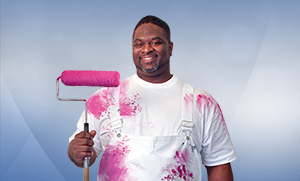Physical Therapy after Breast Cancer
Debi Schneider, physical therapist at Memorial’s Orthopedic and Neurosciences Center, explains how mobility can be affected after breast cancer surgery.
How can you help women after breast cancer?
With a lumpectomy or mastectomy, a huge muscle is invaded during those surgeries. So after breast cancer, even 15 years later, women may say, “I’m no longer doing this or that and I could prior to surgery.” We address issues such as posture, mobility, strength, and any possible scar adhesions.
How can mobility be affected after breast cancer?
Women are having major surgery to their breasts. They’re either removing a lump or removing breast tissue. They have to invade into the muscular tissue. There has been damage, so we need to teach them how to regain their strength and mobility to get them back to the activities that they love to do. We want to see women whether it’s been two months or 20 years after surgery if they’re still having problems because we can help them.
What is lymphedema?
One of the things that occasionally happens is lymphedema. Lymphedema is an abnormal accumulation of fluid in the affected limb. If it’s breast cancer, that would be in the arm. In treatment, we teach patients the signs and symptoms of lymphedema because like anything, the quicker it’s diagnosed, the easier it is to treat. Lymphedema is not curable, but it is not life threatening. It is not something that has to change the way you live as long as we treat it properly.
How do you treat lymphedema?
We treat it through a gentle massage exercise and compression wrapping. Not all women develop lymphedema if they’ve had breast cancer. It’s a very small percentage of women who develop it, but our goal through the screenings is to catch this early to prevent it from getting worse.
Do you need a doctor’s referral?
Generally to get physical therapy, you need a doctor’s referral. With breast health, we have just started a program where we do screenings twice a month so that you can make an appointment to come in and see us. Then if we see that there may be a need for physical therapy, we would need to get a referral from the doctor. Sometimes with that one-time, free screening, we can give you some instructions on what to do at home, but if there’s further need, we would need a prescription from your physician.
Do you work closely with The Harold & Dixie LePere Breast Health Center?
We work directly with the Breast Health Center and have associations with Drs. Laduzinsky and Clanahan. Dr. Clanahan has also started referring patients for physical or occupational therapy as soon as they have surgery. He gives patients a folder that indicates that we do these screenings and gives them some outlines on lymphedema prevention and exercises to do at home.
Share a breast cancer therapy success story.
A young lady who had breast cancer ended up developing a little bit of lymphedema in her left arm. She was in her 30s and couldn’t wear the clothes that she wanted to wear. She wasn’t able to even lift her arm up. Women are really scared after breast cancer. It takes an emotional and a physical toll on their bodies. Through treatments, she started wearing the clothes that she wore before because we were able to get rid of the swelling. She needed to continue with exercises, but these are the treatments that she needed to do in order to get back to wearing her clothes and picking up her children. Women are afraid to pick up their children, and therefore, they don’t do it. They get weaker. She was able to get back to her normal life through the assistance and physical therapy of regaining her motion, her strength, and getting rid of the swelling.
In This Section

Julie’s Physical Therapy Experience
Julie Eichholz discusses her experience with the physical therapists at Memorial’s Orthopedic and Neurosciences Center after her double mastectomy.

